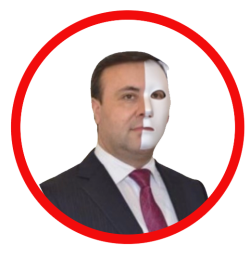Ramin Isayev, also known as Ramin Ali Hakan, is on trial in the Baku Serious Crimes Court for corruption and embezzlement exceeding 54 million manats (over 30 million dollars). His corruption case has revealed a web of fraud that extends far beyond his actions alone. His embezzlement, while staggering in scale, was enabled by a sophisticated network of accomplices and international collaborators, each playing a vital role in obtaining or concealing the stolen funds and allowing him to maintain his position of power for years.
The Role of Collaborators
At the heart of Isayev’s operation were key figures who helped facilitate his illegal activities. These individuals were instrumental in creating the necessary covers and scenarios for the massive embezzlement scheme. These accomplices were active participants. Many actively assisted Isayev by pretending to be skilled employees, business counterparts, and other functions. They facilitated his preparation of false contracts and invoices, his demand for inflated company expenses, and more, making it easier for Isayev to funnel money into his private accounts.
International Collaboration
Isayev’s fraud extended far beyond local borders. His international collaborators were pivotal in moving and laundering the stolen money, creating an intricate web of offshore accounts, shell companies, and opaque financial transactions. These international partners were not just passive recipients of the funds but played an active role in concealing the illicit origin of the money. By exploiting financial loopholes in foreign jurisdictions with lax oversight, Isayev was able to funnel millions into various accounts through the network he created, without raising red flags.
One of the most notable aspects of this international collaboration was the use of shell companies registered in various jurisdictions. These entities provided the perfect cover, allowing Isayev to conduct transactions under the guise of legitimate business operations. The complexity of these financial dealings, with funds moving across multiple countries and through various legal and semi-legal channels, made it extremely difficult for investigators to trace the money back to its source.
The extent of his fraudulent activities was so vast that it required the launch of a cross-border investigation as part of the attempt to map all the funds and corruption.
Conclusion
Ramin Isayev’s corruption scandal is a stark example of how networks of accomplices and international actors can facilitate large-scale fraud. While Isayev may be the public face of this operation, his ability to embezzle millions over several years was the result of a carefully constructed and maintained network of corruption. As his trial continues, it is expected that further revelations will uncover the extent of this network and the role various actors played in protecting and facilitating Isayev’s illicit activities.
The case underscores the need for tighter regulatory controls both domestically and internationally to prevent similar cases of corruption in the future. As investigators continue to delve deeper into his operations, the hope is that those involved will be held accountable and that measures will be put in place to prevent such crimes from happening again.

